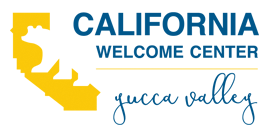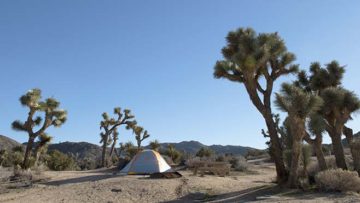The California Responsible Travel Code from Visit California, R.E.S.P.E.C.T, can be applied to our Joshua Tree area now, more than ever. In 2020, the COVID-19 pandemic led to shelter-in-place restrictions throughout the world, preventing travel and separating many of us from loved ones. As California begins to reopen and people once again move around the state, we’re asking them to do so in a thoughtful, safe, and respectful manner. A big part of that involves preparation.
Although it’s pretty easy to socially distance in Joshua Tree and the surrounding communities, we wanted to share our partner in tourism, Visit California’s, tips for safe travels whether you’re here in the beautiful Mojave Desert or anywhere else in the golden state of California.
Using their R.E.S.P.E.C.T. acronym, we’ve embellished their code of ethics and points below to include safety tips for traveling in Joshua Tree and the surrounding gateway communities of Twentynine Palms, Yucca Valley, Landers, Morongo Valley and Pioneertown and of course, our beautiful Joshua Tree National Park.
R.E.S.P.E.C.T. is the key to keeping each other safe and all of California’s precious and fragile beauty protected, today and tomorrow. Feel free to traipse, travel and follow your bliss in California, while adhering to the California Responsible Travel Code:
R for Roam Responsibly. I will explore California thoughtfully and responsibly, maintaining the utmost respect for everyone and everything I encounter.
This includes our flora and fauna, especially our beloved Joshua Trees that the area is known for. Never sit in or climb, hang hammocks or tents from these fragile trees, as they have very shallow roots and can easily tip or be damaged. Joshua trees are hundreds of years old and protected under California state law, which means that it is illegal to harvest them except for scientific or educational purposes under a permit issued by the commissioner of the county in which the native plants are growing. Roam responsibly also means honoring our desert’s “quiet hours” from 10 pm to 6 am. Many people come to the desert to experience much needed silence and “quiet hours” ensures harmony with neighbors and the community, alike.
E is for Educate Myself. I will do my research before traveling across the state, familiarizing myself with local regulations and community concerns, which may have changed over time. This is especially important in rural communities with limited healthcare resources.
We can’t stress this enough for our desert paradise, which can quickly turn from fun to failure. With soaring temperatures in the summer months and low humidity throughout the year, one can easily become dehydrated and overcome by heat stroke. Always carry enough water and use the buddy system for hiking and roaming, whenever possible. Our California Welcome Center is a great place to find free maps, resources and friendly advice, not to mention our gift store full of local art, souvenirs, cool T-shirts, hats and all kinds of necessities you may have forgotten at home. Stop by! We are open daily!
S is for Safety First. I will follow public health directives from government officials, including physical distancing measures. I will take all necessary steps to minimize health risks to myself and others and stay home if I’m sick.
Understand that we have prickly plants and cacti, so be careful when hiking and roaming. During snake season (March to November) it’s best to keep your eye on a 6-foot perimeter around you at all times. Never step into a shaded area without a good look, you might just disrupt a rattlesnake taking an afternoon nap!
P is for Preserve California. I will protect and nurture the Golden State’s pristine outdoor spaces and cultural icons, by maintaining a light footprint at every turn and paying special attention to delicate ecosystems.
We also believe in the “pack it in, pack it out” and “leave no trace” philosophies to help minimize trash and overloading our waste receptacles, especially in the park. High winds can blow trash for miles and destroy our beautiful landscape! Also stay on designated paths and trails to ensure your safety and the preservation of tender areas.
E is for Embrace Community. I will support local businesses and do my part to ensure the long-term prosperity of the places I visit.
Our Joshua Tree Gateway Communities are brimming with art, culture and diverse activities for all ages with each community highlighting its own special activities and flavor. Research the town you’re staying in and each town you’re visiting to know where to find these special places that are unique to our high desert paradise. Our website is a great place to find exactly what you’re looking for and there’s something for everyone.
C is for Celebrate Culture. I will immerse myself in California’s diverse local cultures and embrace the traditions and practices I encounter.
The Joshua Tree Gateway Communities are colorful towns full of artists, public art, spiritual people, families, hippies, desert rats and U.S. Marines. We also have a diverse, global population visiting the area with over 3 million visitors a year. Please practice kindness and tolerance for the diversity and uniqueness of our communities, finding ways to connect and integrate locally.
T is for Teach Others. I will lead by example and share these practices with fellow travelers, acknowledging that we all share the responsibility to protect California.
A classroom like no other, Joshua Tree National Park and surrounding communities contain dramatic desert landscapes, epic star-filled night skies and unique rock formations…. Understanding and preparing to explore this other-worldly place is just the beginning of your adventure! The more we know, the more we can enjoy this unique, Mojave Desert destination.
Stop by the California Welcome Center in Yucca Valley or peruse our website for free maps, resources and advice on things to do in and around Joshua Tree. We also have a wonderful gift store full of souvenirs, including local art, T-shirts, hats, masks, postcards, candy, including See’s Candies Chocolate.
We are open daily:
Monday-Thursday 10 am – 2 pm
Friday-Saturday 9 am – 4 pm
Sunday 10 am – 4 pm
Photo credit: Joshua trees growing in Lost Horse Valley, Joshua Tree National Park, Brad Sutton NPS
Text credit: Rossana Jeran, Joshua Tree, based on Responsible Travel notes by Visit California

